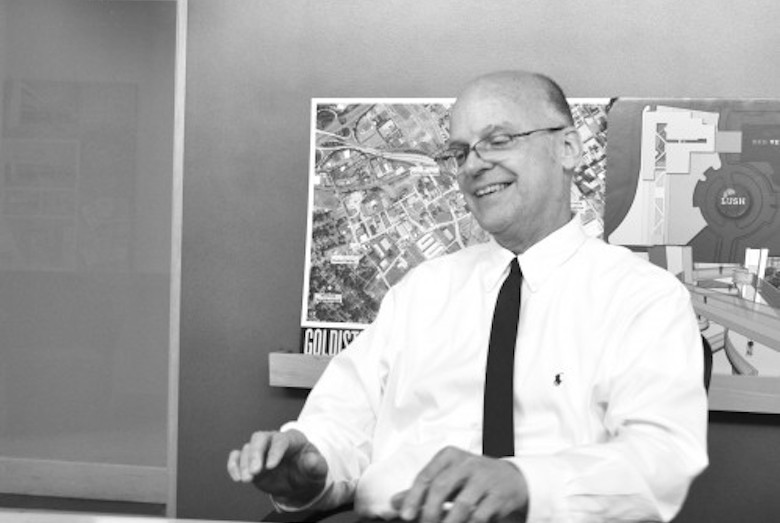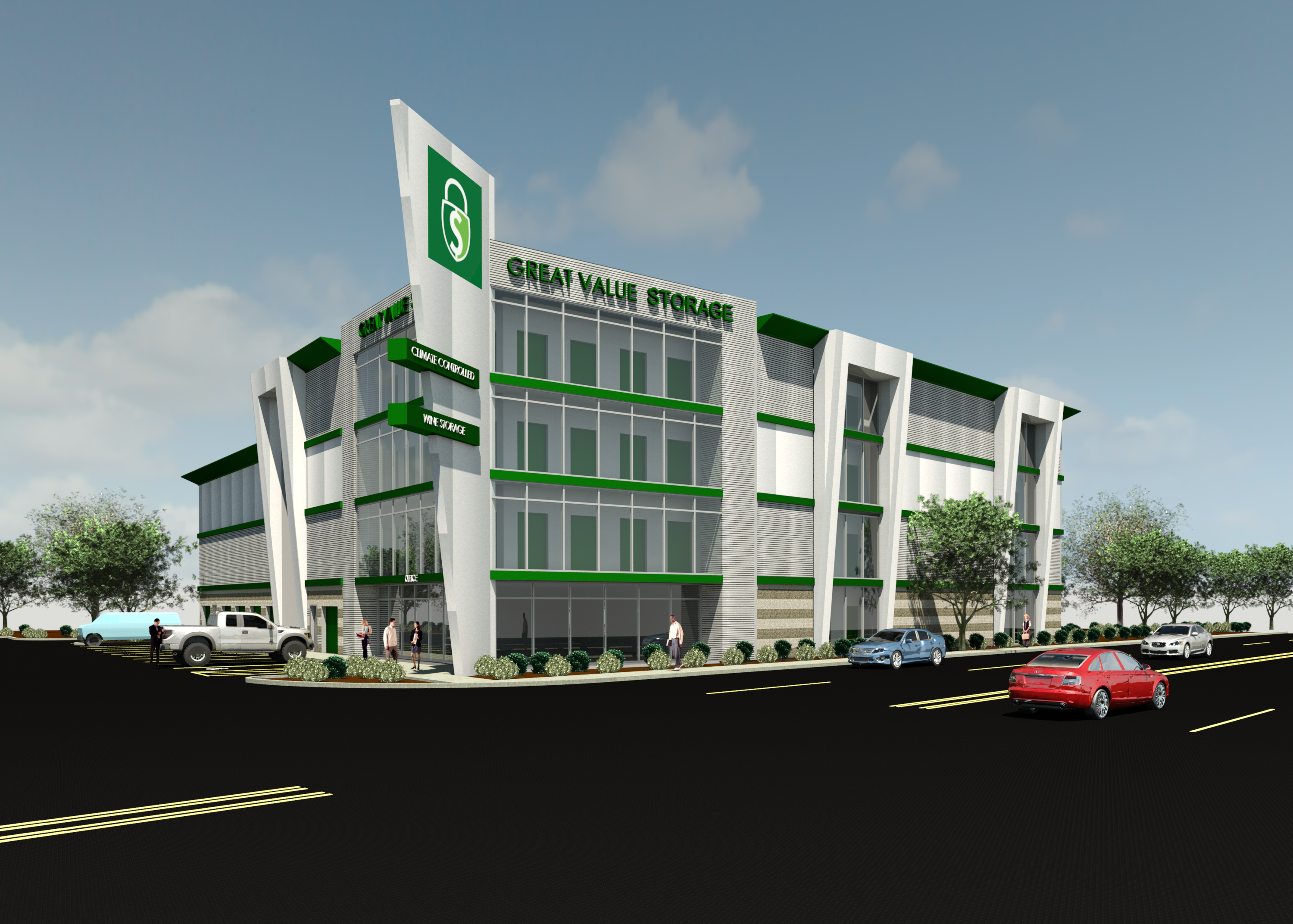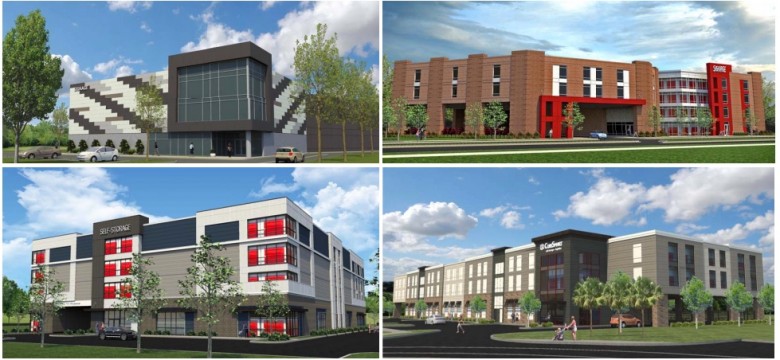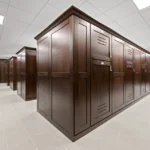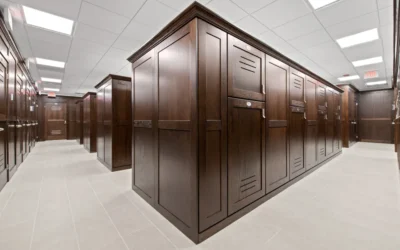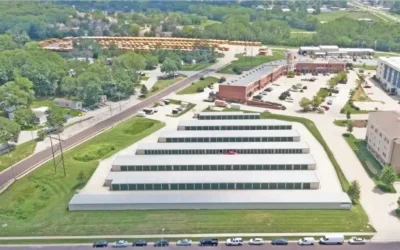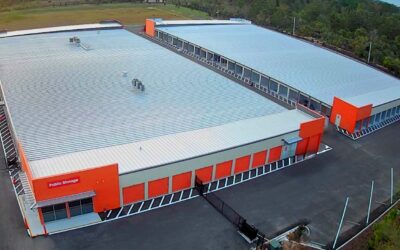Stephen Overcash knows that perception is everything.
So when he was facing challenges in getting some of his self-storage projects approved, he coined a new term to win over reluctant zoning officials: “lifestyle storage.”
“For so many years, self-storage were big, white boxes,” said Overcash, principal of Overcash Demmitt Architects (ODA). He has been designing self-storage for more than three decades.
“But now for many people – especially millennials – they are an extension of their lives. Storage is no longer just used for nuts and bolts but also for things that some folks use on an almost daily basis.”
As such, they are increasingly being located in more urban, prominent locations.
“Self-storage is now architecturally significant,” he said. “In urban areas, we engage the street and have things on the ground floor that are interesting to look at.”
Urban storage boom
The boom in self-storage being built in urban areas has translated into more work for architects such as Charlotte-based Overcash, whose clients include Morningstar, CubeSmart, Extra Space and Go-Stor-It.
Self-storage now makes up about 25 percent of the firm’s business compared to about 10 percent several years ago.
“It’s just exploded,” Overcash notes. “It really started escalating three years ago. In Charlotte especially, and other areas that are growing fast, you’re seeing millennials moving to tiny apartments but they have lots of stuff and no place to put them.”
A Morningstar facility located close to apartments located in central Charlotte had “one of the fastest lease-ups” Overcash had ever seen because so many of the apartments’ residents could walk to it.
“In the old days location wasn’t that important,” he said. “It was where the land was cheap because people would just throw their belongings there and leave it.”
The 35-person company is currently working on about 20 self-storage projects. Overcash estimates designing 10 new ones a year for the next two to three years.
“The trend line is increasing”
Bruce Jordan, principal of San Clemente, CA-based Jordan Architects Inc., says his firm his “hugely busy” now compared to five years ago with self-storage making up about 85 percent of his business compared to about 75 percent five years ago.
“And the trend line is still increasing,” he says. “We have more self-storage jobs now than just six months ago. Plus, we are getting increasing calls to design these outside of the U.S.”
Jordan Architects is currently working on projects in Mexico City, the Caribbean, and Canada. Of the 145 active self-storage jobs the firm is working on, about 125 of them are in the U.S.
Jordan has been designing self-storage since 1981 and has worked on nearly 3,000 projects since. Three years ago, he doubled the size of his office to about 6,000 square feet. He counts the top 100 self-storage developers as his clients.
Beyond the box
A big trend of the current development cycle is to build more prominent, upscale and central self-storage locations. With the changes in location have come changes in design. They look more like office buildings than warehouses.
Overcash finds that his usual architectural challenge is creating four facades to tie into a neighborhood. If it’s an edgy area, his firm will use lots of glass, bright colors and metal panels. The facilities are usually mixed-use, and parking is hidden (often under the building) when possible.
“Especially in more urban locations, there’s other product types such as a yogurt shop or some office space on the ground floor. Very few can try to put up a plain white box anymore and get it approved,” Overcash said.
Inside, there’s an effort to make the interiors feel bright and safe with lots of lighting – both artificial and natural, cameras and windows. He thinks the newest trend will be figuring out a way to build a self-storage facility and wrap with with apartments, townhomes or a hotel.
“The two product types could share a lot of things,” he said. “Construction costs are so high so people are going to have to find creative ways to save money. Putting different uses together saves a lot of money.”
Supersize me
Jordan agrees with Overcash that the trend is moving towards more upscale, higher-end attractive architecture that is able to get approved in prominent downtown sites.
“The concept is changing from industrial into more upscale with a light, bright and cheerful design,” Jordan says. “You’re seeing lots of natural light in a facility with plenty of cameras.”
Another trend Jordan is seeing is larger facilities compared to about 10 years ago.
“Then the average size was about 70,000 to 90,000 square feet,” he said. “Today, the average size is 120,000 to 150,000 square feet. We have several projects that are 200,000 square feet and even a couple as large as 300,000 square feet.”
More rules ahead
Like Overcash, Jordan believes there are still many underserved markets that spell opportunity.
“Of course there are some that are oversaturated but it’s incumbent on the developers to recognize and make those distinctions,” Jorday said “But I still see major opportunity in the U.S. even with the number that are being built.”
But the bigger challenges, Jordan says, lie in the complexities of getting a project through the entitlement process with so many environmental regulations and more restrictive codes.
“A lot of new regulations have come into place such as the Stormwater Prevention Act and that has added a considerable level of details and engineering expertise,” Jordan said. “Plus, some states just have very complex rules you have to follow.”
